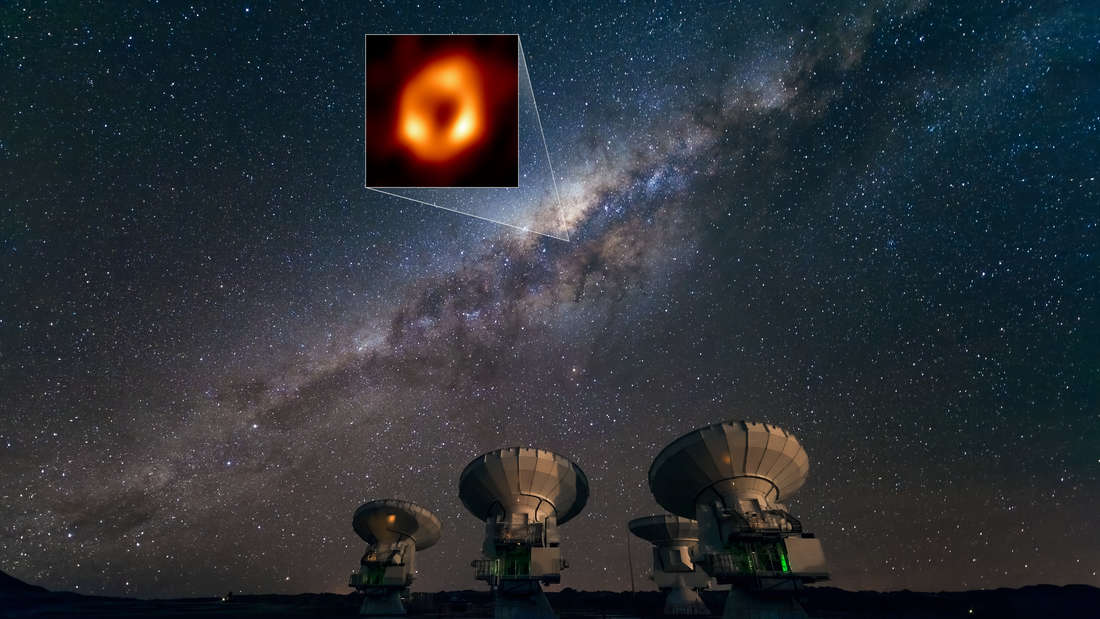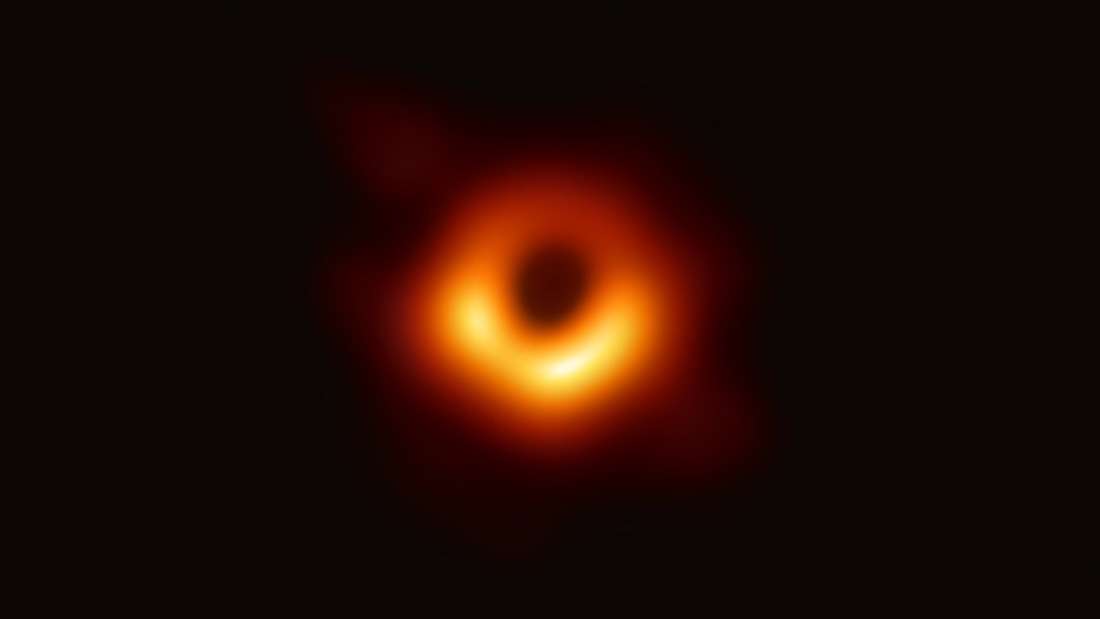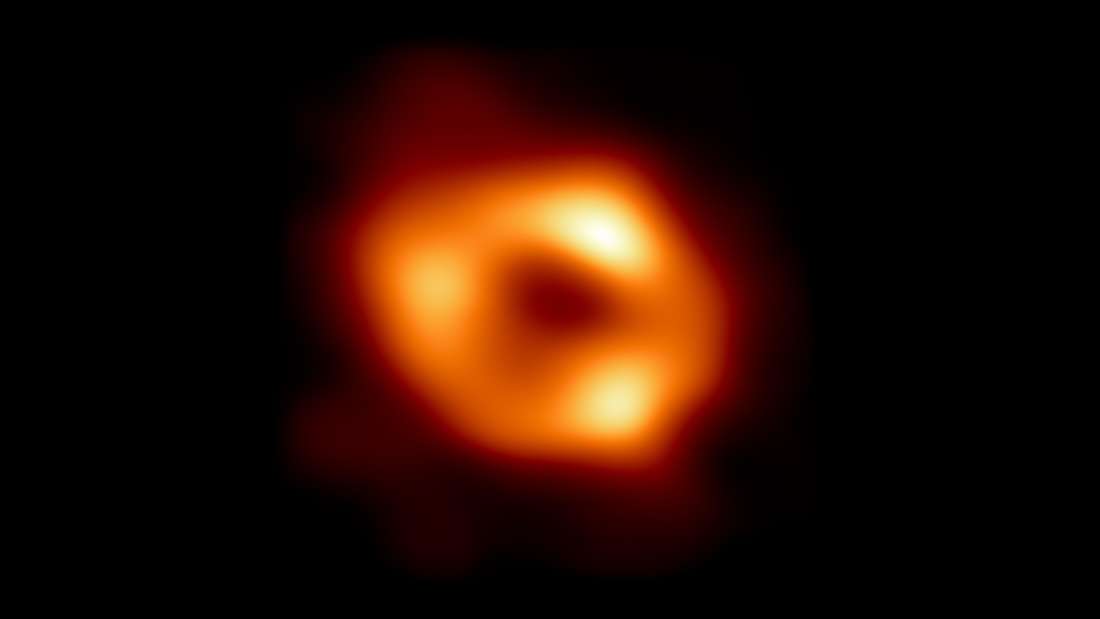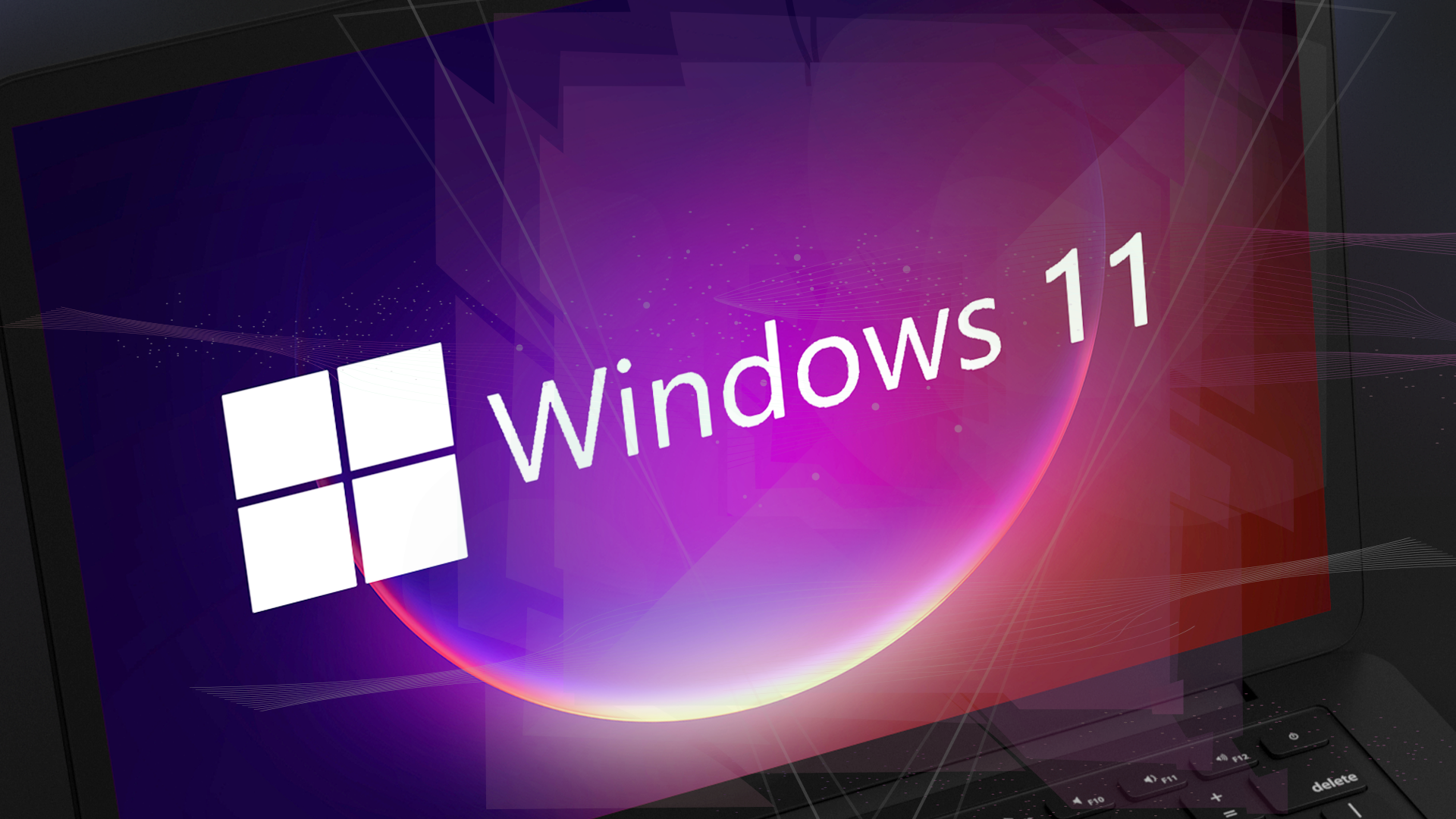At the center of the Milky Way lurks the supermassive black hole Sagittarius A*. The Event Horizon Telescope presents its first picture – a sensation.
- The Event Horizon Telescope took the first picture of a black hole in 2019 – an astronomical sensation at the time.
- Researchers have now followed suit and the first image black hole In the center of the galaxy – Sagittarius A*.
- Sgr A* is about 26,000 light-years away from Earth – eight telescopes had to work together to image the black hole.
+++ at 4.30 pm: Now that the cat has come out of the bag, for the first time the black hole at the center of our galaxy can be seen with our own eyes. a more detailed article on that Image of the black hole Sagittarius A* at the center of the Milky Way released by the Event Horizon Telescope can be found here,
+++ 3.40 PM: The black hole at the center of the galaxy was more difficult for researchers to find than the more distant black hole M87*. EHT scientist Chi-Kwan Chan explains why: “Gas near the black hole move at the same speed – almost as fast as light – around both Sgr A* and M87*. But when the gas orbits the larger M87*, many taking days to weeks, it completes one orbit around the much smaller Sgr A* in just a few minutes. This means that the brightness and pattern of the gas around Sgr A* changed rapidly because The EHT collaboration looked at it – a bit like trying to get a clear picture of a puppy chasing its tail.
| supermassive black hole |
| center of galaxy |
| 4.3 million solar masses |
| about 27,000 light years |
Black hole at galaxy’s center: Sagittarius A* photographed
+++ at 3.30 pm: The newly released image resembles the black hole in the galaxy Messier 87 captured by the EHT in 2019 – although Sagittarius A* is significantly smaller and less massive. “We have two completely different types of galaxies and two different masses of black holes, but near the rims of these black holes they look surprisingly similar,” says EHT Science Council co-chair Sera Markoff. Huh.” “This tells us that general relativity for these objects dominates at the close range, and any further differences we see must be due to variations in the material surrounding the black hole.”
+++ at 3.15 pm: Sagittarius A* is the black hole at the center of our galaxy. The image of this black hole is similar to the 2019 EHT image of the black hole at the center of galaxy M87. According to the press conference, this surprised even the researchers.
But what is actually shown in the picture? A black hole absorbs light, so it cannot actually be photographed. But the gas orbiting the black hole shines brightly and betrays the black hole: a central dark region can be seen in this gas – the black hole’s shadow.

Event Horizon Telescope reveals the black hole at the center of the Milky Way
+++ 3:07 PM: Huib van Langfeld (EHT Project Director) now presents the results. Van Langfeld explains that more than 300 people were involved in the work.
+++ 3.05 PM: It’s actually the black hole at the center of our galaxy that the Event Horizon Telescope (EHT) – a coalition of telescopes around the world – captured. Sagittarius A* is located at the center of our galaxy, about 26,000 light-years away from Earth.
“We will see something new, exciting and exciting at the center of our Milky Way,” Garching said at the press conference. The black hole at the center of the Milky Way was detected years ago – and is now the first visible evidence that many telescopes around the world have now brought together.
space newspaper
Of free space newsletter Notifies you twice a month about topics in astronomy And space travel are up to date. You will also get to know about upcoming celestial events and opportunities for observation in good times.
+++ 2.55 PM: In April 2019 it was a sensation: the first image that visually proves a black hole. Has the Event Horizon Telescope (EHT) captured the black hole at the center of our galaxy, the Milky Way, this time? The result will be presented in a few minutes. This ticker keeps you up to date on what is being presented and tries to categorize scientific results.
The black hole at the center of the galaxy was photographed? Event Horizon Telescope presents results
+++ 2.25 PM: The press conference on the Event Horizon Telescope’s exploration of the Milky Way begins at 3 p.m. There are many synchronous press conferences around the world that present “groundbreaking” discoveries at the same time.
Update Thursday, May 12 at 1:00 PM: Today, the Event Horizon Telescope (EHT) collaboration will present “unprecedented results for the Milky Way” at a press conference. It is not yet known what exactly it is about. Experts believe that the first images of the black hole at the center of the Milky Way (Sagittarius A*) will be presented. The press conference starts at 3 PM – then you’ll see what it really is.
Event Horizon Telescope (EHT): First picture of a black hole presented
First report from Wednesday, May 11: GARCHING – When the Event Horizon Telescope (EHT) Collaboration held a press conference in April 2019, the researchers involved presented a significant scientific achievement: they photographed the shadow of a black hole and thus the visual evidence of a supermassive black hole rendered. The picture went around the world and suddenly aroused great interest in black holes. Now there is one more Invitation for a press conference of EHT, at which “Unprecedented Results for the Galaxy” will be presented. Just like in 2019, there will be multiple press conferences around the world at the same time. Not much is known yet.
But there is a speculation in the scientific community as to what the EHT should present this time: whether it is the first recording or even a movie The supermassive black hole at the center of the galaxy, Sagittarius A*? It is possible – experts suspected already in 2019 that an image of Sagittarius A* would be presented. However, the researchers then presented an image of the black hole at the center of the Messier 87 galaxy.
Event Horizon Telescope: Did it Capture the Black Hole at the Galaxy’s Center?
But how is it possible for the Event Horizon Telescope to photograph a black hole? Supermassive black holes are found at the center of most galaxies and are characterized by one thing: they devour everything that gets too close. Matter, once it crosses the event horizon, collapses into the black hole, from which nothing escapes – not even light. Something that swallows up the light itself is impossible to actually photograph. What’s more, black holes are far away – the black hole captured in 2019 is about 55 million light years away from Earth, black hole at the center of the galaxy It is at a distance of about 26,000 light-years.

To be able to photograph black holes, the EHT uses a special technique: Very Long Baseline Interferometry (VLBI). Several radio telescopes distributed around the world are synchronized and used to observe the selected object simultaneously. When the first photo of a black hole was published, the researchers involved explained that they could read a newspaper from Paris in New York with the resulting resolution of their giant, Earth-spanning telescope.
Event Horizon Telescope (EHT): How do you take a picture of a black hole swallowing light?
But that still doesn’t explain how researchers can image an object swallowing light. You should know that supermassive black holes are mostly What is known as an accretion disc is surrounded by Huh. This includes matter that has been attracted to the black hole but has not yet crossed the event horizon. As this accretion disk surrounds the black hole, the gas inside it heats up and glows – which the researchers used for their purposes in 2019. EHT. to Hino Phalke In 2019 it was explained this way: “When a black hole collapses into a bright region like a disk of glowing gas, we expect it to produce a dark region resembling a shadow.”
And indeed: the Event Horizon Telescope was able to photograph a ring-like structure with a dark center – the shadow of a black hole. Eight telescopes were involved in the observations at the time – they were in Hawaii, Mexico, Arizona and the Sierra Nevada, in Chile’s Atacama Desert, and even in Antarctica. The observations resulted in petabytes of raw data processed by supercomputers including the Max Planck Institute for Radio Astronomy in Bonn.
A generation ago it was thought impossible to photograph a black hole
“We have achieved something that was thought impossible a generation ago,” EHT researcher Shepard S. Doleman said in a 2019 press release. “Breakthroughs in technology, links between the world’s best radio observatories, and innovative algorithms have opened a whole new window for us on black holes and the event horizon.”
“We have achieved what was thought impossible just a generation ago.”
Will the Event Horizon Telescope provide a view of the black hole at the galaxy’s center this time? It’s possible — but it’s also possible that the Event Horizon Telescope Collaboration has an entirely different surprise in store for observers. (tab)

Internet fan. Alcohol expert. Beer ninja. Organizer. Certified tv specialist. Explorer. Social media nerd.





